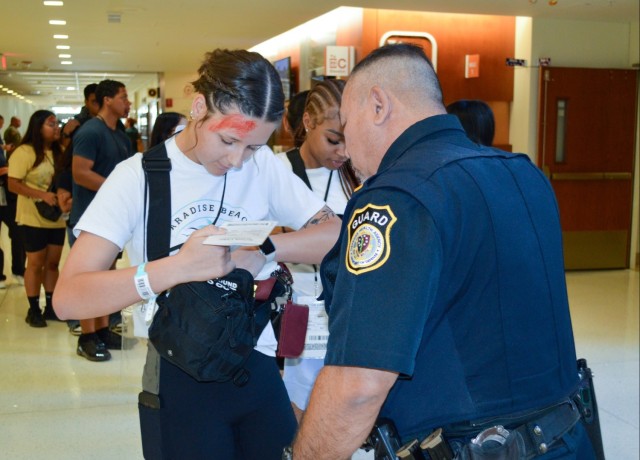JOINT BASE SAN ANTONIO-FORT SAM HOUSTON, Texas (Nov. 17, 2025) – Brooke Army Medical Center participated in the San Antonio Mass Casualty Exercise and Evaluation Oct. 15.
“The exercise went very well,” said Army Col. Michael Henry, BAMC deputy commander for administration and the incident commander in the Hospital Command Center. “It was definitely a success. We had 49 patients (role players) come to our facility and we were able to push them through to test our capabilities from the emergency department to the operating room, then to our inpatient wards.”
The annual exercise is designed to assess the surge capabilities of the hospitals in the 26,000 square-mile region covered by the Southwest Texas Regional Advisory Council. SAMCEE specifically tests the region’s capabilities to respond to a mass casualty incident by assessing participating hospitals’ patient triage procedures, treatment processes, and patient tracking abilities. It also tests regional communications, WebEOC (cloud-based emergency management communications platform) usage, logistics, and emergency services capabilities.
“We have a great relationship with STRAC and that was essential to this exercise being a success,” Henry said. “We also had a FEMA (Federal Emergency Management Agency) workshop a couple of months ago. All the key leaders from across the organization that have an essential role in emergency management came together. That (FEMA workshop) gave us a lot of perspective on recent events in the world and across the country and how other hospitals responded. It gave us a sense of urgency and focus coming into our own exercise.”
This year’s exercise scenario involved an incident where multiple terrorists went to a large venue and started shooting individuals, setting off explosives and releasing chemicals. BAMC received patients with varying degrees of injuries including burns, minor lacerations, and significant wounds.
BAMC is one of two Level I trauma centers in San Antonio. During a real-world emergency many critically injured patients would come to BAMC for care.
“This exercise takes a significant amount of planning and coordination with STRAC and our health care coalition over several months,” said George Wible, BAMC emergency manager. “Between 100 to 150 people within BAMC participated in the exercise including emergency department staff, security, behavioral health personnel and more.”
This year, the exercise had several unexpected events injected into the scenario such as some of the patients possibly being part of the terror group, a blood and IV solution shortage, a trauma elevator malfunction and family members coming to find their loved ones.
“Having the status board with our bed availability, blood product availability, OR manning and labor pool status was very helpful,” Henry explained.
He said he was very impressed with how well the Hospital Command Center leaders and team remained engaged and focused on what needed to be accomplished.
“We were able to improve processes and educate new leaders,” he said. “We identified a few things that we want to build on in the next exercises and in the interim period we have an opportunity to update our Emergency Operations Plan.”
Henry wants every member of the BAMC staff to think about their role during an emergency management response. “Ask questions and really understand what your actions should be in the first 30 minutes, in the first 60 minutes,” he said.
“It was great to see the team engaged throughout the process, from start to finish,” said Army Col. Jason Williams, BAMC deputy commanding officer. “Huge thanks to everyone for giving it their all and making the most of this valuable training. I was really impressed with the HCC team and how detail-oriented they were in addressing everything and keeping us updated.”








Social Sharing